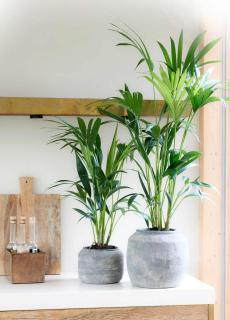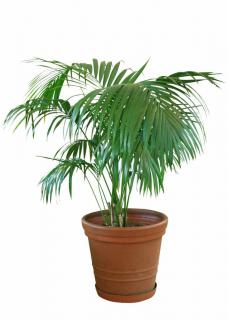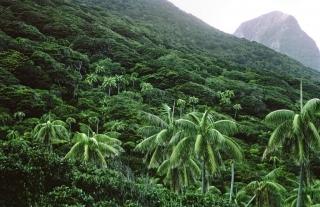

Howea decorates homes all over the world, but grows in the wild on a single exotic island…
Key Howea facts
Name – Howea forsteriana
Family – Arecaceae
Type – indoor palm
Height – 3 to 6 ½ feet (1 to 2 meters)
Exposure – abundant indirect light indoors
Foliage: evergreen – Care: easy – Diseases: red spider mite
With its wide leaves that stay green all year long, Howea (or kentia palm) is appealing for its its exotic bearing and its hardiness. Indoors, it’s very similar to the more common areca palm.
Whether it lacks water, light, or is subjected to too much heating in winter, this palm tree can survive almost any of its owner’s shortcomings. In its natural habitat, it was brought up to survive in extreme conditions, what with hurricanes, tropical monsoons and droughts and such.


If the tips of the leaves are dry and turn yellow, it means your howea needs water. If they turn brown, it means it must be moved to another location: either it lacks space or people brush against it too often.
Dust it from time to time with a moist rag, or bring it out under the rain.
Do try and place several specimens near one another, in the living room near the couch for instance, this will create a miniature jungle and you’ll notice your mind wander to exotic places!

This single island comprises its entire natural habitat.
Howea is endemic to that island: it doesn’t grow in the wild anywhere else.
Islands of the area are facing a grave problem: rising sea levels. Because of this, howea is endangered in its native habitat.
Every single indoor Howea is thus a descendant of a tree on that island.

Since it tends to grow tall, it doesn’t have a large footprint.
If you live where it doesn’t freeze, you can try growing it outdoors. It’s great to line a walkway without blocking out the view too much.
By Laure Hamann